Stopping off at La Aldea de San Nicolás has always been a recommendable pursuit for any travellers making their way around our round island. Its peaceful beach and stunning landscapes continue to be the perfect destination for shedding all kinds of senseless haste.
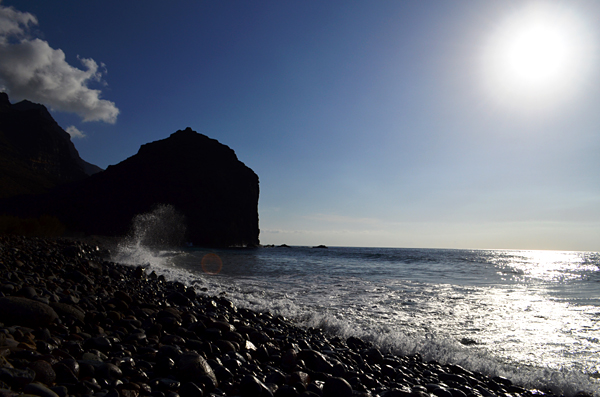
We are now recommending this location with renewed vigour. Following construction of the first phase of a new motorway, this being the stretch between 'el Risco' and 'el Andén Verde', visits to this western municipality of Gran Canaria now contain less than half the bends in the road we used to have to deal with up to just a few months ago. The route features a drive along the longest tunnel in the Canaries, running for over three kilometres. Once we are through this tunnel, it is a simple job to find La Aldea beach, our destination point today. We will leave the ravines and gullies, which spread majestically up from the sea to the summit, for another day.
The route to get there is an intrepid coastal stretch running for over sixty kilometres, thirty-three of which belong to the municipality, and the rest of them to Mogán, Artenara and Agaete. From Agaete to La Aldea, a long line of cliffs sprout up vertically from the sea shore, up to nearly a thousand metres altitude, further enhancing the landscape where visitors can feel the real sense of retreat offered by this side of the island.
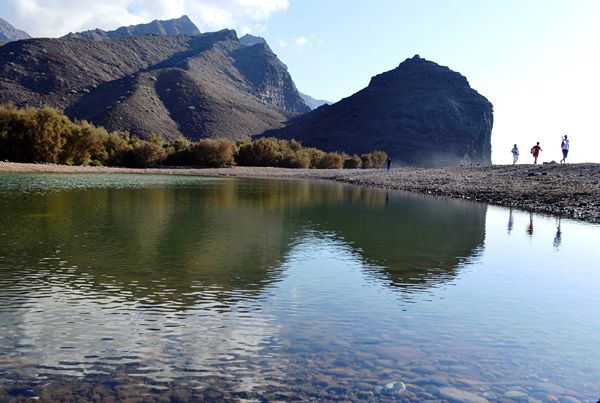
This place might seem both the origin and the end of everything, while the landscape might even produce a wholly different effect, dragging you from the sea inland, enabling you to discover your place at the heart of everything. Whichever way you look at it, the feeling of being in a quite special location, as we do at these secluded spots along La Aldea, is a pleasant and unique one.
One place definitely worth a visit is the large pond called 'el Charco'. There, hordes of people celebrate the ever popular ”Fiesta del Charco” every September, and it is always a comforting stop off on our journey. When there are no fiestas on, the still waters refect the calm and brightness of the municipality itself, and the deep roots of its history. A time long ago, early aboriginal dwellers set up a series of settlements here, some of which are said to date to before 500 years B.C.
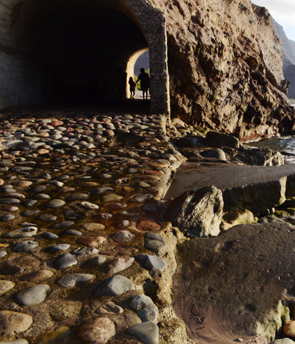
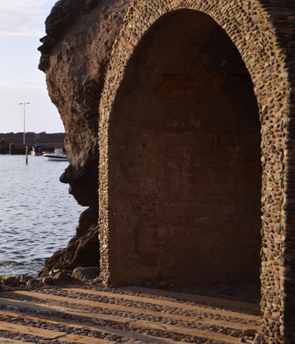
These settlements were varied in type, mostly made up of cave-houses and stone houses, cruciform in the interior and oval-shaped on the outside. These disperse living quarters represented early village settlements and were located near to the ravine mouth of La Aldea, at spots including the archaeological sites of Los Caserones, Bocabarranco, La Caletilla and Lomo de los Caserones.
From 'El Charco' we can make our way along the pebble beach, if you are able to keep your footing, or through an area of local tarahales tree woodland, whose shade provides an added respite. And there on our doorstep we come to the end of our route. Here we can set up for the day on La Aldea Beach.
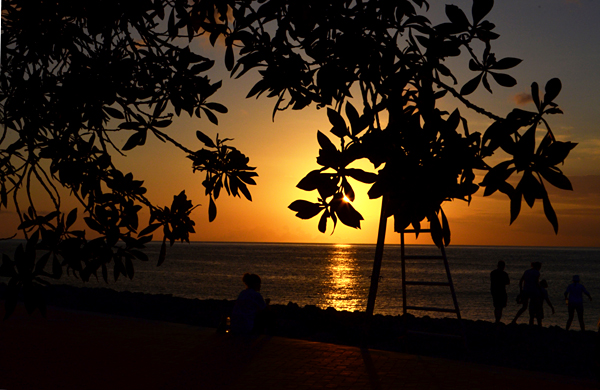
The beach here has two different settings, a wide open one, with its shower facilities and wooden pathway for those who need help keeping their balance on the stones; and another partly sandy area, for which access is gained through a tiny welcoming tunnel hewn out of the rock. Views to the little port are afforded from here.
Don’t tell anyone, but nightall at La Aldea beach is like a reawakening after the end of the world, and is a true wonder indeed.